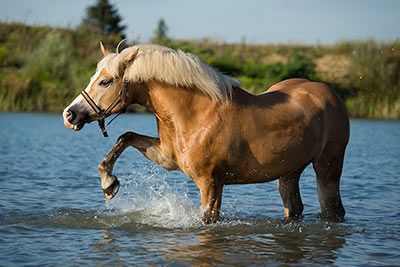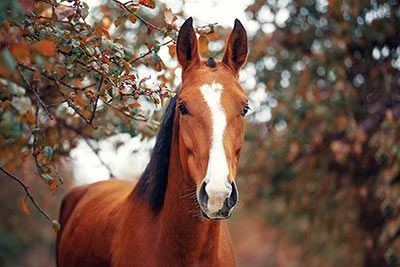Icelandic Horse
Icelandic Horse Breed Profile
| Height | 12.7-14.7 hands (51-59 inches; 130-150 cm) |
| Body | Sturdy |
| Head | Large |
| Neck | Muscular |
| Colors | All, yet no spotted variants |
| Temperament | Friendly, sweet-tempered, self-assured, lively |
| Gait | Elastic |
| Type | Warmblood |
| Origin | Iceland |
| Bred since | 12th century |
| Suited for | Leisure riding, endurance, therapy, show jumping |

They're Weather-Proof
Icelandic horses are absolutely weather-proof, robust and sure-footed. In Iceland they spend all their lives in the open. They do not even mind the rough wind howling over the austere Icelandic landscape. They have a dense winter coat, which keeps them cozily warm at all times. Fortunately, the Icelandic winter is not as extremely cold as one might expect. The average temperature hardly ever falls below 26.6 degrees Fahrenheit (-3 degrees Celsius).
They're Strong
Even though the Icelandic horse is rather small, it is sturdy enough to carry an adult human being.
They Came to Iceland on Viking Ships
The Icelandic horses came from Norway to Iceland on Viking ships in the 9th century. On the island they were the only means of transport until the 19th century.
They Love to Be Free
Icelandic horses love to be free. They are spirited and self-assured, but also very reliable. They are particularly popular with riding beginners and children, because of their sweet temper and straightforwardness.

Special Gait: Tölt
What makes Icelandic horses special: their additional gaits tölt and pace.
The tölt is quite similar to the walk. Only one or two hooves touch the ground at the same time (two or three during the walk).

Special Gait: Pace, Flying Pace
The pace is also called "flying pace“, because it appears as if the horse would not touch the ground at all. During the pace, both left hooves OR both right hooves are on the ground simultaneously. The legs do not alternate diagonally with one another as in other gaits.

Strict Breeding Regulations
Icelandic horses have never been mixed with other breeds since more than 1,000 years. Thus, they are one of the purest breeds of horses worldwide. There even exists a law that Iceland horses may not return to Iceland after having left the island.
The Oldest Icelandic Horse of the World
The oldest Icelandic horse of the world was a mare owned by Andreas Larsen (Denmark). It lived from 1897 - 1954 and reached an age of 57 years. It died peacefully of old age.
Where does the Name Come From?
The name indicates the native homeland of the breed.
Fun Facts
In Nordic mythology, the god Odin had a horse with eight legs. People say that it was an Icelandic horse.











